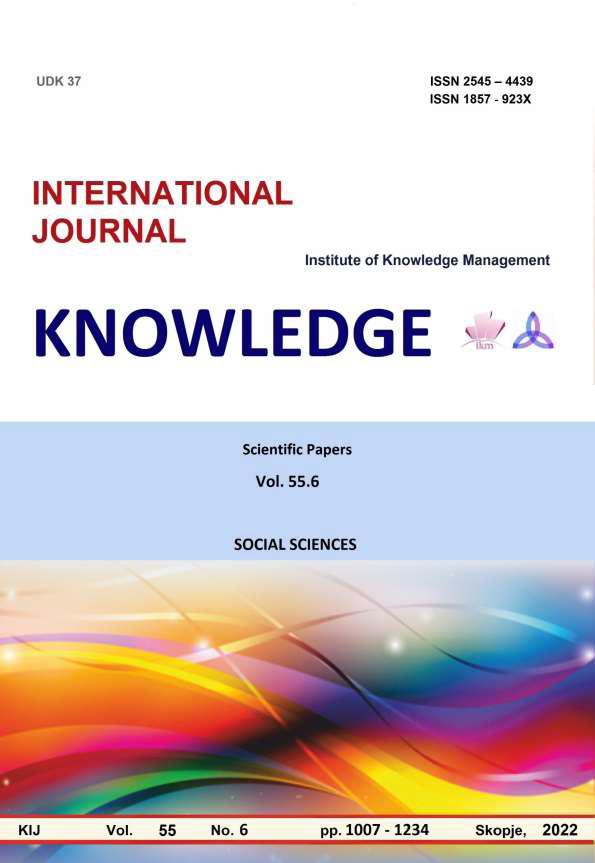THE GAME - HISTORICAL ASPECTS, CHARACTERISTICS AND DEVELOPMENT IN PRE-SCHOOL AND PRIMARY SCHOOL AGE
Keywords:
children's play, pre-school age, primary school age, readiness for schoolAbstract
The problem of children's play occupies a central place in the research of pedagogy, psychologists,
sociologists, etc. A wide range of questions related to the essence of the play routine and its importance for the
overall child development have been developed.
This article examines the historical origin of the game, its combination and development in pedagogical practice.
The article presents a theoretical overview of the essence and characteristic features of play in preschool age, where
it is a dominant activity. Preschool education lays the foundations for lifelong learning. In the current normative
framework for preschool education, it is stipulated that the kindergarten as an institution must provide play activities
in all types of organization of preschool education. The pedagogical situation, which is the main form of
pedagogical interaction, and through which the entire child's personality develops, must also take place through
play.
An analysis is made of the different types of games that are used in preschool age, and which contribute to the
development and cognitive needs of children and thanks to which a number of key competencies are developed. In
all types of play, adolescent children use their experience to deal with specific situations, invoking their thinking,
memory, imagination.
As a child's independent practice, play is also a powerful tool for increasing readiness for school. In primary school,
the game, from a leading activity for children, turns into an accompanying, and later supporting the formation of the
new activity - the educational one. In this period, the game continues to realize its great influence on the child's
personality, but it becomes more concrete in terms of the overall intellectual development of the young student.
The importance of play and its development in elementary school is also presented. The different groups of games
(educational, developmental, reproductive and diagnostic) that are used by students from 1.-4. class.
References
Василева, Е. (2007). Детето в началното училище. София: Фараго.
Велева, А. (2013). Педагогика на играта. Русе: Университетско издание.
Георгиева, Г. (2020). Компетентностният подход като средство за развиване на математическите представи на децата от предучилищна възраст. Научно-практическа конференция, посветена на 80-годишнината от рождението на проф. Георги Бижков (стр. 102-112). София: Университетско издателство "Св. Климент Охридски".
Димитрова, К. (2018). Формиране на контекстни компетенции в предучилищна и начална училищна възраст - съвременни изследвания на проблема. Образование и технологии, 66-71.
Димитрова, К. (2019). Модел за формиране на контекстни умения чрез познавателна математическа дейност в предучилищна възраст - приказни математически игри. Образование и технологии, 51-56.
Димитрова, К. (2021). Модел за формиране на контекстни умения чрез познавателна математическа дейност в предучилищна възраст. Сборник статии и студии, 52-87.
Люлюшев, М. (1996). История на педагогиката. София: Абагар.
МОН. (03.06.2016 г.). НАРЕДБА № 5 за предучилищното образование. София.
Петрова, Е. (1977). Предучилищна педагогика. София: Наука и изкуство.
Пирьов, Г. (1971). Педагогическа психология. София: Наука и изкуства.
Тодорова, М. (2019). Игрови модели за икономическо и финансково образование в детската градина. Бургас: Университет "Проф. д-р Асен Златаров".





